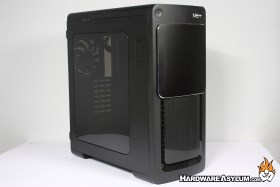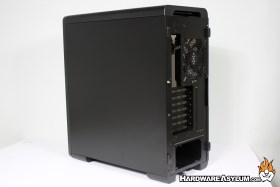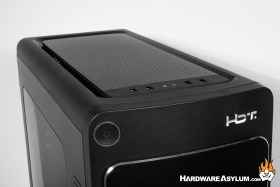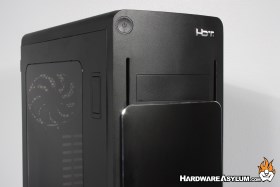HBT+ Shield 700 Case Review
Author: Dennis GarciaCase Layout and Features
There are two major differences between the Shield 700 and the Turbine 700.
Outward Styling
Interior Finish
The Shield 700 features a very traditional design style with flat plastic panels accented by soft rounded corners and a juxtaposition of highly polished plastic patterns pressed into the soft micro textured panels. This allows the case to offer a matte finish with a few parts being highly reflective and stand out against the panels.
Shield gets its name from the thick aluminum sliding door that covers the external drive bay. While the panel is nothing more than a sliding door the thick aluminum plate does provide some noise protection but only indirectly as it contains no sound absorption foam.
Turning the case around you can see the layout of the motherboard in relation to the PSU. The back of this case is very solid and lacks many of the vents you would commonly see on high airflow designs. To help with venting the expansion bay covers are constructed from a fine metal mesh to allow air access out of the case.
If you look closely at the front and top panels you will see the raised details that help to accent the polished panel. The raised areas are a smooth texture while the area below is highly polished and will catch the light differently depending on how you look at it.
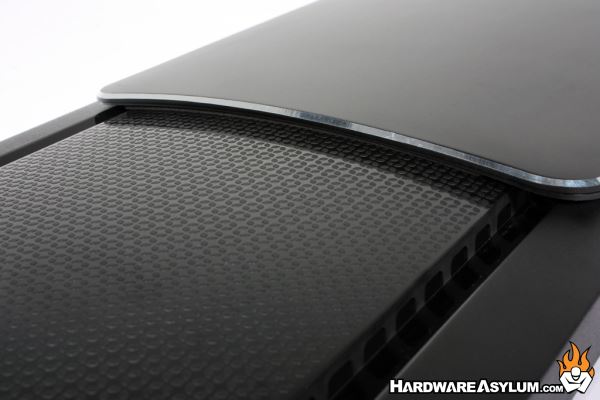
At the top of the case you will find a single power button along the upper left and machined HBT+ logo on the right. Four USB ports (Both USB 2.0 and 3.0) are located on the top panel with analog mic and audio connections in the middle.
Behind the sliding door you will find a single external 5.25” drive bay. I will talk about this more but the sliding door is very unique in that it comes with a very smooth actuation and responds to a very slight touch and will slowly slide down. There is no return feature so you’ll have to lift it closed but the motion is very effortless and without any noticeable clicks.
The recessed area serves as a primary air intake and exhaust giving air an indirect path to the fans. In some ways this can help to reduce noise emissions but, is not very effective in this configuration.

